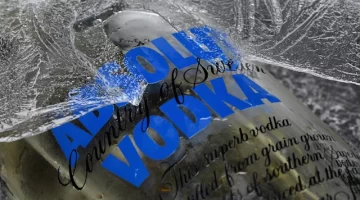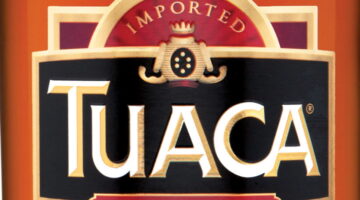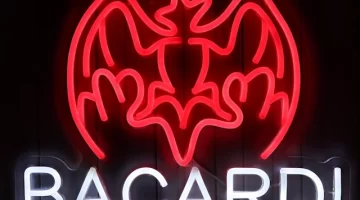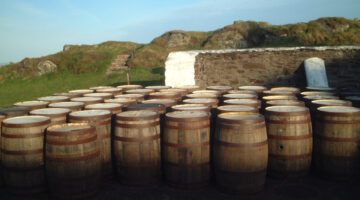A Whiskey for St Patrick’s Day
Mike Gerrard of Travel Distilled Chooses a Whiskey for St Patrick’s Day.
With the recent boom in Irish distilling, we’re spoiled for choice on finding a whiskey for St Patrick’s Day on March 17th. Indeed, maybe you could even break with tradition and try one of the many excellent Irish gins that are now being made.
Whiskey somehow seems the right choice, though, and for me there’s only one option and that’s a drop (or two) of Bushmills. If it wasn’t for Bushmills, I might not be drinking whiskey at all.
I grew up in an industrial town near Liverpool in the north of England, and beer was what you drank. Going off to college as a student, beer was what you drank. Who could afford spirits anyway? Gradually I added wine as a drink of choice. Then vodka and rum. Gin made me gag. I’d tried the occasional glass of Scotch, but always hated it. Too smoky, and even if it wan’t smoky I couldn’t abide the taste.
Bushmills Tour
The scales fell from my eyes (and my palate) on a tour of the Antrim Coast of Northern Ireland. The tour included a visit to the Old Bushmills Distillery, a huge tourist attraction in the town of Bushmills. It’s a fascinating place with a long and interesting history.
At the end of the Bushmills tour came the inevitable tasting. I’ll just take a sip, I thought, as I know I won’t like it. I didn’t want to offend them, and the problem was me, not their whiskey.
I took a tentative sip, a tiny amount, just to be polite. It was puzzling. I liked it! Our Bushmills tour guide had explained the differences between the making of Scottish and Irish whiskies. There are several, but they include:
1) Scotch is distilled twice, Irish three times, for a purer flavor.
2) In Scotland they use copper stills which are typically about one-third the size of the pot stills they use in Ireland.
3) Most importantly, in Scotland the barley is dried using peat smoke, which naturally affects the flavor. In Ireland they dry the barley in kilns that are covered, so the whiskey tastes more of the barley than of peat.
I can’t remember now which whiskies we tasted at the end of our Bushmills tour. I know it was several, but what I do remember is how much I enjoyed them all, and what a surprise it was. And I’ve enjoyed them ever since. Gradually, I also found Scottish whiskies I enjoyed. These days I actually like the really smoky Scottish whiskies which I so hated at first.
A Whiskey for St Patrick’s Day
So that’s why I always try to make sure we’ve a bottle or two of Bushmills in the house for St Patrick’s Day. There’s another reason too. My great-grandfather and great-grandmother emigrated from Ireland to England in the 19th century, so I’ve got Irish blood in me but not, as far as I know, any Scottish blood. Mind you, these days my blood is probably about 20% ABV anyway.
Who Invented Whiskey?
People are usually surprised to discover that whiskey wasn’t invented in Scotland – and some Scots won’t admit it! As far as we know, it’s more likely whiskey was first made in Ireland and then taken across the short stretch of water to Scotland. Somehow the spelling got changed from whiskey to whisky, and they also changed and refined the process to produce a better quality drink that then became forever associated with Scotland.
Nevertheless, in the late 19th century Ireland had 88 whiskey distilleries and was the biggest-selling whiskey in the world, far outselling Scottish whiskies. How things changed!
The History of Bushmills
To put the history of Bushmills into perspective, recent figures show that there are currently 18 whiskey distilleries operating in Ireland, with more in the pipeline. In the 1970s, there were just two, and Bushmills was one of them.
Bushmills is Ireland’s oldest working distillery, and also the oldest licensed whiskey distillery in the world, having been given its license in 1608. This is the date they usually measure things by. However, the license didn’t refer to the present distillery, but was for someone else who was distilling in the area. The Bushmills company which built the first proper distillery was formed in 1784, but operated under the same distilling license. Those buildings were destroyed in a fire, and the present distillery opened in 1885 and they’ve been distilling whiskey there continuously ever since.
The Mills on the River Bush
The distillery and the town of Bushmills get their name thanks to the River Bush, and the water mills which stood on its banks to mill the barley from the surrounding fields. Even today, the source of the water for Bushmills’ whiskies is taken from Saint Columb’s Rill, a small stream which is a tributary of the River Bush.
It’s a testament to the history and tradition of Bushmills that every bottle which bears the name is still made at the distillery in Bushmills. Other brands are known to make their spirits in different places, but slap the same name on them all. Not here, though.
Touring Bushmills
Although I remember tasting different whiskies at the end of my tour, that might have been a perk for a journalist as these days only one glass of whiskey or a soft drink is offered at the end of a Bushmills tour. You do get to visit this working distillery, although what is happening when you visit is totally dependent on what’s happening in the production cycle. It might be crazy busy, it might be a quieter day.
Children under eight years of age are not permitted on the tours. Unless you’re making a booking for a group of 15 or more, tickets are on a first-come-first-served basis, and you’ll be put on the first available tour. The wait isn’t usually too long as they are well set-up for visitors and receive 120,000 people on tours each year.
For the whiskey connoisseur, there are special Tasting Experience tours available, giving you a more in-depth look at the distillery and the chance to have a private tasting of several Bushmills whiskies. These need to be booked ahead: visitors.bushmills@bushmills.com.
The Bushmills Range
So which Bushmills whiskey to choose for St Patrick’s Day? The current Bushmills range of whiskies includes:
Red Bush: matured in bourbon casks.
Bushmills Original: a blend of triple-distilled malt whiskey with a lighter grain whiskey.
Black Bush: matured in former oloroso sherry casks.
10 Years Aged: aged for at least ten years in bourbon barrels.
16 Years Aged: aged for 16 years in a combination of oloroso sherry and bourbon-seasoned casks, then matured for several more months in former port wine barrels.
21 Years Aged: aged for at least 19 years in former oloroso sherry and bourbon-seasoned casks, then transferred into Madeira casks for a further 2 years.
There’s also a Distillery Reserve whiskey only available for purchase at the distillery. So how to choose a whiskey for St Patrick’s Day? Black Bush has always been my favorite, but you can’t really go wrong.



















